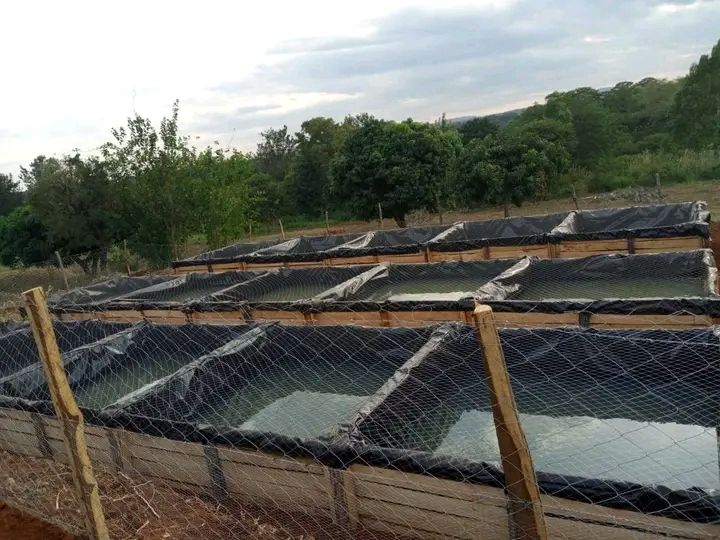
In our earlier posts, we looked at how to prepare your pond before stocking fingerlings and how to stock fingerlings, manage mortality, and feed them right. By now, your pond should have healthy fingerlings swimming around — but this is only the beginning.
The real challenge in fish farming comes after stocking. Without proper management, even well-prepared ponds can quickly turn into costly losses. That’s why post-stocking management is critical to keep your fish alive, healthy, and growing profitably.
In this guide, we’ll cover the essentials of managing your pond after stocking: water quality, fish health, and growth monitoring.
1. Monitoring Pond Water Quality
Water is the life support system of your fish. Poor water quality is the number one cause of stunted growth and mass mortalities.
- What to monitor daily:
- Dissolved Oxygen (DO): Fish suffocate if DO drops below 3 mg/L. Low oxygen is most common at night or after plankton die-offs.
- Temperature: Ideal range depends on species (e.g., tilapia: 25–32°C). Extreme highs or lows cause stress.
- pH: Should stay between 6.5–8.5. Sudden swings can kill fingerlings.
- Ammonia: Comes from fish waste and excess feed. High levels are toxic.
- How to monitor:
- Use simple kits for pH, DO, and ammonia.
- Observe water color: light green = healthy plankton bloom, brown/black = poor conditions.
👉 Tip: check water in the morning (lowest DO) and late afternoon (highest DO).
2. Maintaining Optimal Water Conditions
Even if initial water is fine, conditions change as fish grow. Regular interventions are needed:
- Aeration: Use paddle wheels, blowers, or even simple splashing pumps to add oxygen, especially in dense ponds.
- Water exchange: Replace 10–20% of pond water periodically to dilute waste and refresh oxygen.
- Managing plankton: Moderate green color is good, but if water turns very dark, reduce feeding and increase aeration to avoid oxygen crash.
- Weed control: Keep aquatic weeds below 10–15% of pond area — they compete for oxygen at night.
3. Disease Prevention & Fish Health
Healthy fish = profitable fish. Diseases spread quickly in ponds, so prevention is cheaper than cure.
- Common signs of disease:
- Fish gasping at the surface (low oxygen or gill disease).
- Lesions, sores, or white patches on skin.
- Loss of appetite or erratic swimming.
- Preventive practices:
- Quarantine new fingerlings before mixing.
- Keep nets, buckets, and equipment clean.
- Limit visitors and animals around ponds to reduce contamination.
- When to act: If more than 5–10% of fish show unusual behavior, consult an aquaculture extension officer or vet immediately.
4. Feeding and Growth Management
Feeding continues to be your biggest cost — but also your biggest opportunity for fast growth.
- Adjust feeding rates:
- Fingerlings: 5–10% of body weight per day.
- Juveniles/growers: 3–5% of body weight per day.
- Use sampling to guide feeding: Every 2–4 weeks, weigh a sample to update feed amounts.
- Feeding schedule: 2–3 times daily, preferably morning and evening.
- Feed quality: For growing fish, protein content of 25–30% is sufficient.
👉 Keep records of feed used, fish weight gained, and mortality — this helps calculate Feed Conversion Ratio (FCR), a key profitability measure.
5. Regular Sampling and Record Keeping
Growth doesn’t happen evenly — that’s why routine checks are important.
- Frequency: Every 2–4 weeks.
- How to sample: Use a seine net or scoop to collect 30–50 fish.
- What to record: Weight, length, survival rates.
- Why it matters:
- Helps adjust feeding amounts.
- Detects stunted growth early.
- Projects harvest dates and market weights.
6. Predator & Pest Control
Even well-fed fish are at risk if predators invade.
- Birds: Use nets, scarecrows, or reflective tape.
- Snakes & Frogs: Clear vegetation around ponds; use fencing if possible.
- Wild fish: Install inlet/outlet screens to stop unwanted species.
7. Preparing for the Grow-Out Stage
This stage bridges fingerlings into table-size fish.
- Target sizes: For tilapia, market weight is often 250–350g in 5–6 months.
- Adjust stocking density: If growth slows due to overcrowding, consider partial harvests or thinning.
- Plan for harvest: Align with peak market demand for higher prices.
Conclusion
Post-stocking management is where successful fish farming truly begins. By keeping water quality stable, preventing disease, feeding wisely, and monitoring growth, you’ll guide your fingerlings into strong, market-ready fish.
In our next post, we’ll explore harvesting and marketing your fish — turning all this hard work into real profits.

Disclosure: This banner contains an affiliate link. I may earn a commission if you purchase through it, at no extra cost to you.
